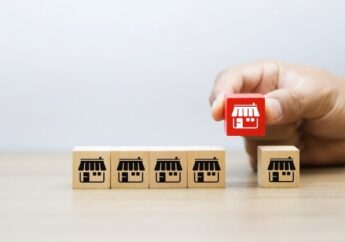Guide To Setting Up A 401(K) Retirement Plan For Small Businesses
by Arnab Dey Business Planning 23 May 2023

Only one-third of small business owners offer retirement plans, and say they cannot afford it.
That’s why, in today’s competitive labor market, a 401(k) retirement plan may be the easiest way to distinguish your small business from others and to attract and retain top talent. This plan’s name is derived from the 401(k) subsection of the Tax Code, which established this type of plan.
The 401(k) plan has become very popular among small business owners because it offers a flexible and better option for retirement savings compared to other options. Employers offer 401(k) plans for retirement savings and investment.
A 401(k) retirement plan gives small business employees a tax break on money they contribute. The contributions are automatically deducted from the employees’ paychecks and then invested in funds that they choose, from a selection of options.
Here’s a simple guide on how to successfully set up 401k for small business ventures that will attract and retain top talent, improve retirement readiness, and enhance productivity for small business owners.
Choose the Best 401(k) Plan
First, you will need to choose the best 401(k) plan for you. This could be a traditional plan, a safe harbor, or a SIMPLE 401(k) plan. Consider contacting a retirement plan expert or financial institution if you feel lost and need help choosing the best 401(k) plan for you.
Traditional 401(k) Plan
The traditional 401(k) plan offers the most flexibility among the three types of plans. Employers may choose to contribute on behalf of participants or match employee deferrals. These contributions may be subject to vesting schedules, which provide that an employee’s right to employer contribution becomes non-forfeitable after a certain period.
It allows participants to contribute pre-tax through payroll deductions. The annual testing makes sure that the benefits of rank-and-file workers are in proportion to those for owners/managers.
Safe Harbor 401(k) Plan
A safe harbor 401(k) plan is a type of retirement plan that is designed to provide employees with the ability to save for retirement in a tax-advantaged manner. This plan must provide for employer contributions that are fully vested when made. The safe harbor 401(k) plan does not have to adhere to the same complex tax rules as a traditional 401(k), including the annual nondiscrimination testing.
Automatic Enrollment 401(k) plan
An automatic enrollment 401(k) plan allows employers to deduct from employee wages a certain percentage of the amount. This amount is then contributed to the retirement plan by the employer unless an employee affirmatively chooses to contribute less or more.
Set Up a Trust Fund for Plan Assets

Plan assets should be held in a trust so that they can only be used to benefit participants and beneficiaries. At least one trustee must be appointed to oversee contributions, investments in the plan, and distributions from and to the 401(k).
The financial integrity of your 401(k), therefore, depends on the trustee. This is why it’s one of the most crucial decisions you make when setting up a 401(k) plan. The contracts you use to set up your 401(k) plan do not have to be held in trust.
Create a Recordkeeping Program
An accurate recordkeeping system will help you track and attribute correct contributions, earnings, losses, plan investments, and expenses, as well as benefit distributions in the accounts of participants.
Typically, if you hire a financial institution or contract administrator to manage the plan, they will also help keep the necessary records. A recordkeeping system can also help you, the plan administrator or financial provider, prepare the annual report/return that is required to be filed with the Federal government.
Inform Employees about the Plan
As you set up your 401(k) plan, you will need to inform employees of its benefits and requirements. A summary plan description (SPD) is the main way to inform beneficiaries and participants about the plan. Typically, the SPD is produced along with the plan document. It is important to send this to all participants, and you may also want to give your employees additional information about the benefits of joining your 401(k) plan.
Final Thoughts
401(k) retirement plans are an invaluable tool for small business owners. Not only do they provide tax benefits, but they also help to secure the future of small business owners and their employees. This type of plan allows small business owners to save for retirement while providing their employees with a way to save for their future.
In addition, 401(k) plans can be used as an incentive to attract and retain quality employees, as well as offering a way to reward long-term employees with additional benefits. With a 401(k) plan in place, small business owners can ensure that their financial future is secure while also helping their employees achieve financial security in the long run.
Read Also:







































































































